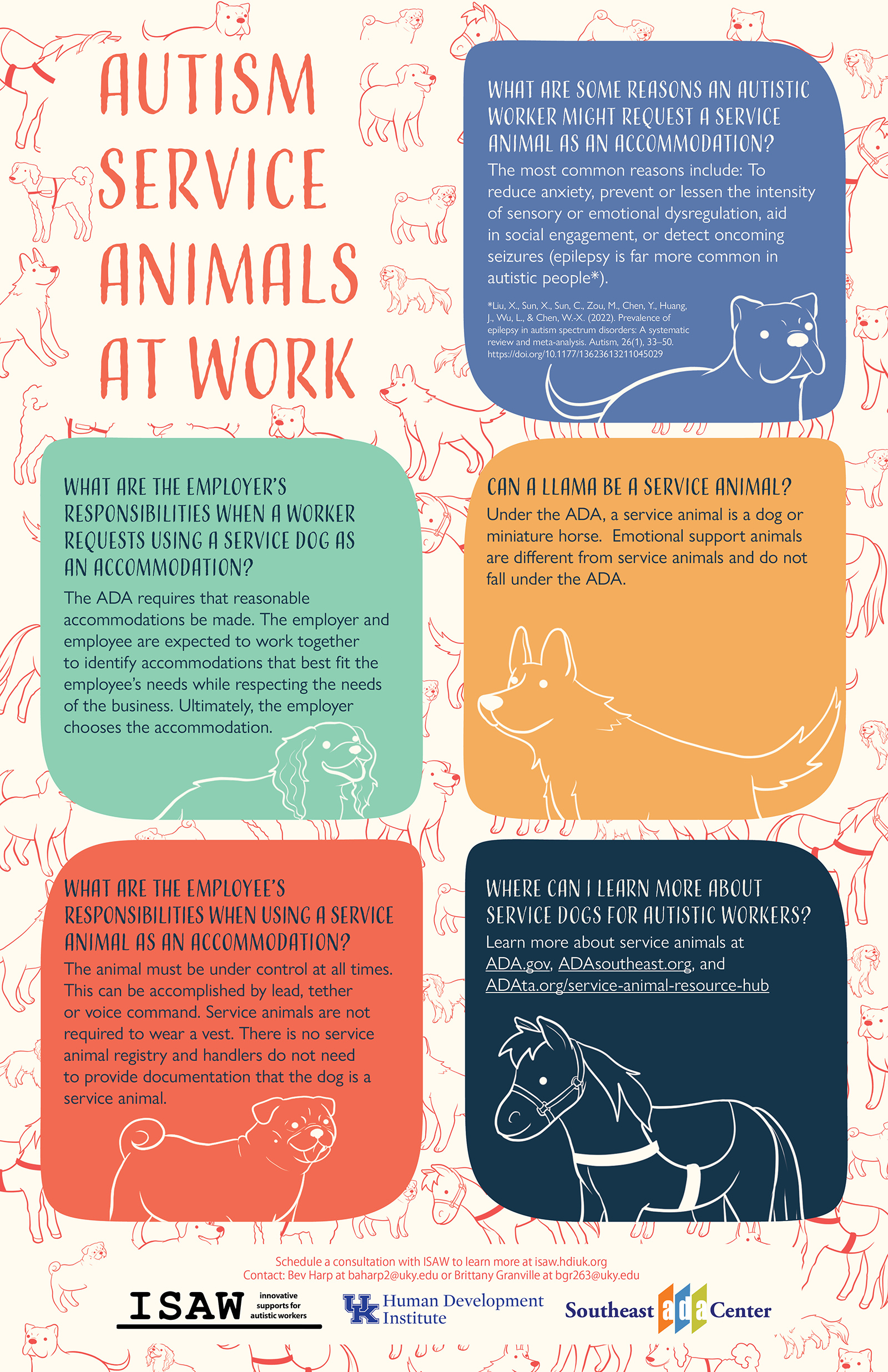
Service animal infographic image description
Description: an infographic titled: Service Animals at Work.
there are 5 colored rounded boxes with text and white outlines of a dog or horse. The same dogs and horses, outline in red, are also used as a pattern in the background.
Box one:
What are some reasons an autistic worker might request a service animal as an accommodation?
The most common reasons include: To reduce anxiety, prevent or lessen the intensity of meltdowns, aid in social engagement, or detect oncoming seizures (epilepsy is far more common in autistic people*).
* Liu, X., Sun, X., Sun, C., Zou, M., Chen, Y., Huang, J., Wu, L., & Chen, W.-X. (2022). Prevalence of epilepsy in autism spectrum disorders: A systematic review and meta-analysis. Autism, 26(1), 33–50. https://doi.org/10.1177/13623613211045029
Box two:
What are the employer’s responsibilities when a worker requests using a service dog as an accommodation?
The ADA requires that reasonable accommodations be made. The employer and employee are expected to work together to identify accommodations that best fit the employee’s needs while respecting the needs of the business. Ultimately, the employer chooses the accommodation.
Box three:
Can a llama be a service animal?
Under the ADA, a service animal is a dog or miniature horse. Emotional support animals are different from service animals and do not fall under the ADA.
Box four:
What are the employee’s responsibilities when using a service animal as an accommodation?
The animal must be under control at all times. This can be accomplished by lead, tether or voice command. Service animals are not required to wear a vest. There is no service animal registry and handlers do not need to provide documentation that the dog is a service animal.
Box five:
Where can I learn more about service dogs for autistic workers?
Learn more about service animals at
ADA.gov, ADAsoutheast.org, and
ADAta.org/service-animal-resource-hub
